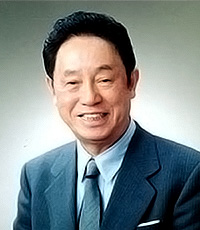Japanese Pioneers
Leo Esaki

Leo Esaki was born in Osaka in 1925. After graduating from the School of Science at the University of Tokyo in 1947, he entered Kobe Industries Corporation and then moved to Tokyo Tsushin Kogyo K.K. (Tokyo Telecommunications Engineering Corporation, which became Sony Corporation) in 1956. He started working for IBM’s Central Research Laboratory in 1960. He received the Nobel Prize in Physics in 1973 and the Order of Culture in 1974. He was invited to serve as president of Tsukuba University in 1992 and was appointed chairman of the Science and Technology Promotion Foundation of Ibaraki (while concurrently serving as the director of Tsukuba International Congress Center) in 1998. He was awarded the Grand Cordon of the Order of the Rising Sun, first class, in the same year. He became president of the Shibaura Institute of Technology in 2000 and president of the Yokohama College of Pharmacy in 2005.
After moving to Sony, he started working on pn-junction diodes as the senior researcher in the semiconductor laboratory. During the course of this study, he discovered the tunneling effect and negative resistance effect in the voltage–current characteristic that arise as the width of the pn-junction is decreased. This was the first time in physics that a tunneling effect in a solid-state material had been verified. Furthermore, these phenomena provided the basis for the development of a new type of electronic device called the tunnel (or Esaki) diode. These achievements led to his receiving the Noble Prize in Physics in 1973 and the Order of Culture in 1974.
After moving to the IBM’s Central Research Laboratory in the U.S.A. in 1960 to work on fundamental research into solid-state physics, he developed molecular beam epitaxy and used this in successfully creating a superlattice structure for semiconductors.
From his return to Japan in 1992, he went on to serve in turn as the president of Tsukuba University, the Shibaura Institute of Technology, and the Yokohama College of Pharmacy. At the request of Prime Minister Obuchi, he took office as the chairman of the National Commission on Educational Reform to compile the report 17 Proposals to Change Education.


